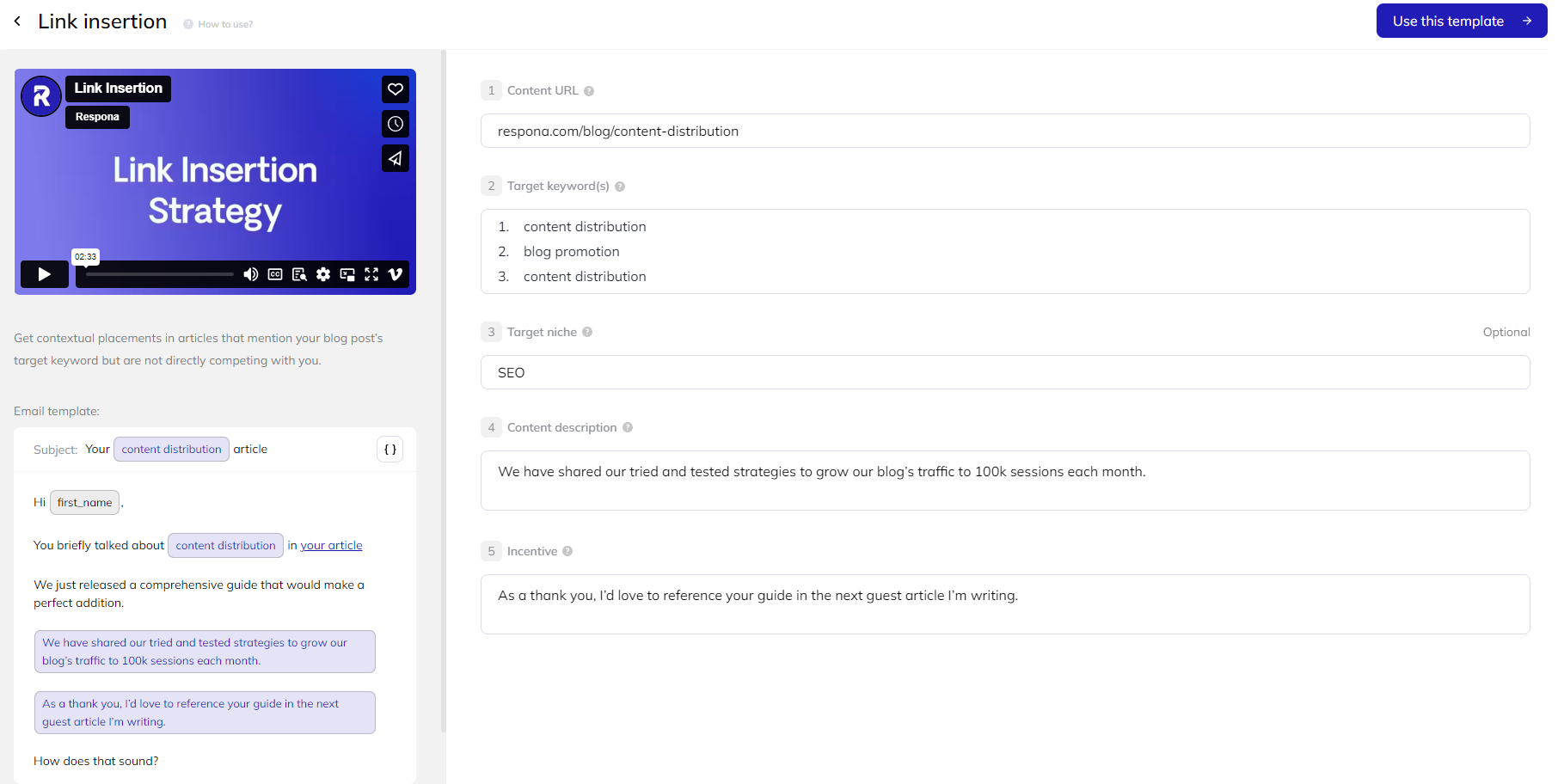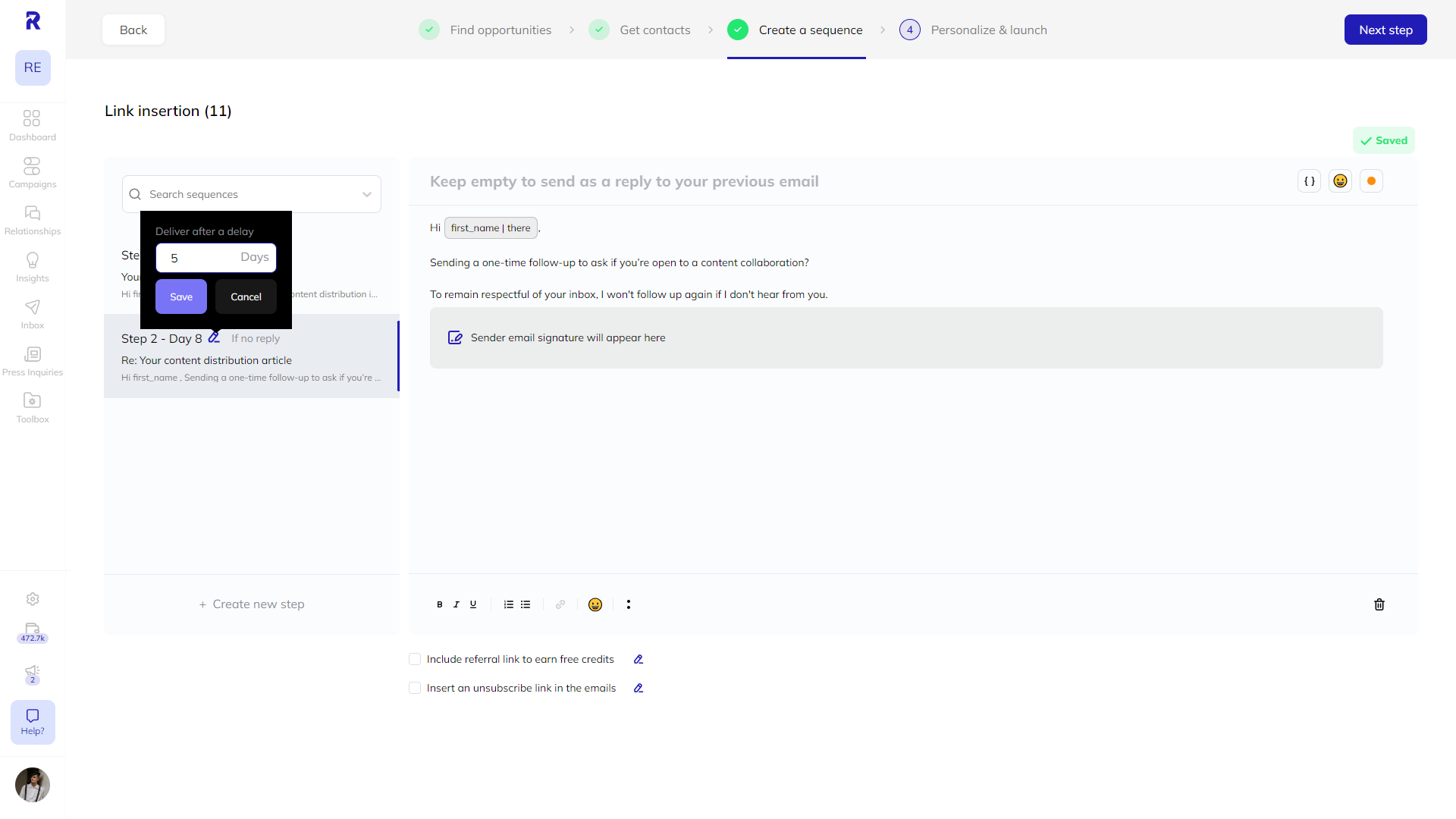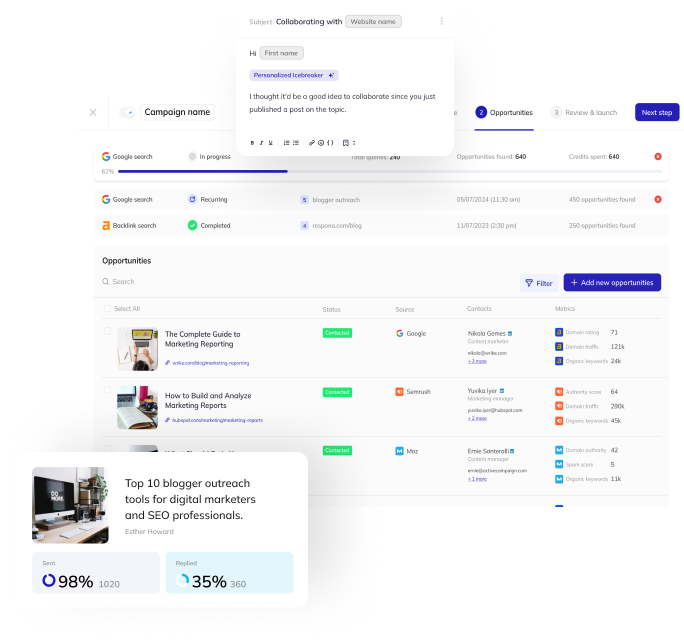According to a survey conducted by Serpstat, over 55% of marketers and SEO specialists agree that link building brings high results for search engine optimization.
And link insertions are one of the, if not the most popular way to build backlinks – right along with guest posting.
So let’s talk about it!
In this article, we’ll walk you through:
- What link insertions are and how to find link insertion opportunities
- How to find relevant contact information
- Best practices for preparing your outreach sequence and personalize it
Let’s get right into it.
Link building cheat sheet
What are Link Insertions?
In Layman’s terms, a link insertion happens when you find a relevant website, and insert your link in its existing content on your desired anchor text – also known as an “editorial” link, or even niche edits.
This link building strategy is important for SEO because they pass on PageRank back to your website, contributing to your website’s rankings. And, of course, they also direct some of that sweet traffic to your resource.
But how do you do it?
Typically, either through cold email outreach (by finding the site owner, and contacting them directly), or by leveraging existing networks of collaborations.
In this article, we’ll be walking through the former approach: i.e, blogger outreach.
How to Find Link Insertion Opportunities?
The most direct approach to finding link insertion opportunities is by doing an old-fashioned Google search but with a little help from advanced search operators.
More specifically, these three operators:
- Inurl:blog
- Intext:”keyword”
- Intitle:”keyword”
These help you find blog posts that mention your target keywords in the title and article body.

The upside? Don’t need any tools to do it.
The downside – this manual approach takes forever.
And if you’ve never used advanced search operators before, it may take a little while to learn how they work.
So, let’s look at a better way to find link insertion opportunities – with Respona.
In fact, Respona has a dedicated campaign template for link insertions.

Mind you, this isn’t just an email template – this is a template for the whole campaign.
This means that by just filling out the required fields, it sets up your search criteria, and the basis for your email sequence all in one go.
Just enter the URL of the article you want to build links to, then your target keywords and niche, and sprinkle in a little content description and incentive for your prospect to give you that link – such as an indirect link back.
Once done, click “Use this template” in the top right to proceed.

By default, Respona pulls results from Google – so the websites you’ll find will be the same, just faster.
No need to do much on this screen since all of the search strings are already laid out – using the very same search operators we discussed before.
Click “Continue” and add SEO filters to narrow down the results to your preferences.

On to the next step.
Finding Contact Emails
Finding contacts on your own is an immensely tedious process.
Respona completely automates it with its email finder.

To use it, all you have to do is choose the algorithm that works best for you (by default, it’s set to find the article author and another person at the company – which is perfect for link building).
Then, enter the job titles and seniority levels of your ideal prospects in the corresponding fields.
There are also options to enable catch-all and generic emails to be assigned, but we recommend keeping these off for improved deliverability.
Click “Find contacts” and Respona will take care of the heavy lifting for you.
It’s that easy.
Of course, you may also do additional manual searches by domain or name.
Preparing Your Outreach Template
Since we used a campaign template, our outreach sequence is already prepared.
But we still recommend giving it a personal touch to make it feel unique.
In addition to that, there are a few things we recommend doing to increase your success chance.
The first is to check for spam words:

Add an unsubscribe link:

And chance the delay for your follow-up to 3-5 days:

When that’s done, you’re ready for the last step – personalization.
Personalization
Link building emails can be tricky to personalize.
You want to show that you spent some time researching your prospect without coming across as creepy.
A nice way to give off that impression is by mentioning something your potential partner talked about in their article.
To help with this, Respona comes equipped with an AI-powered article summarizer.
It pulls several snippets of text from your prospect’s blog post that you can copy and paste into your pitch to make it look like you actually read through their content.

Once every pitch has been personalized, your campaign is good to launch.
Now Over to You
So, hopefully, now you have a better idea of how to do link insertions of your own.
Need help? Don’t hesitate to start your 14-day free trial with Respona to see just how much of your time we can save.
Link building cheat sheet
Frequently Asked Questions (FAQ)
What are link insertions and why are they important?
Link insertions involve adding hyperlinks to a website or content for promotional or SEO purposes.
They are crucial for enhancing visibility, driving traffic, and improving search engine rankings by directing users to relevant external resources or internal pages.
How do link insertions impact SEO?
Link insertions play a significant role in SEO by establishing valuable connections between websites, enhancing website authority, and indicating relevance to search engines.
High-quality and natural link insertions can improve a website’s visibility and organic search engine ranking.
Are all link insertions beneficial for SEO?
No, not all link insertions are beneficial for SEO. Search engines prioritize natural and organic link placements that align with the topic of the content and provide valuable information to users.
Artificial or manipulative link insertions, such as paid or low-quality links, can lead to penalties and harm a website’s SEO efforts.
How can I acquire high-quality link insertions?
To acquire high-quality link insertions, it is essential to focus on creating valuable and informative content that others are more likely to link to organically.
Building relationships with influencers, leveraging broken link building and indirect link exchange collaborations can also be quire fruitful.
Are there any risks associated with link insertions?
While link insertions can be beneficial for SEO, there are risks involved if they are not done properly.
Overusing or spamming links can lead to penalties from search engines, negatively impacting a website’s ranking. It’s important to ensure that link insertions are relevant, natural, and high-quality to mitigate any potential risks.
![Step-By-Step Link Insertion Guide [2024]](https://respona.com/wp-content/uploads/link-insertion-1-1024x683.jpg)





